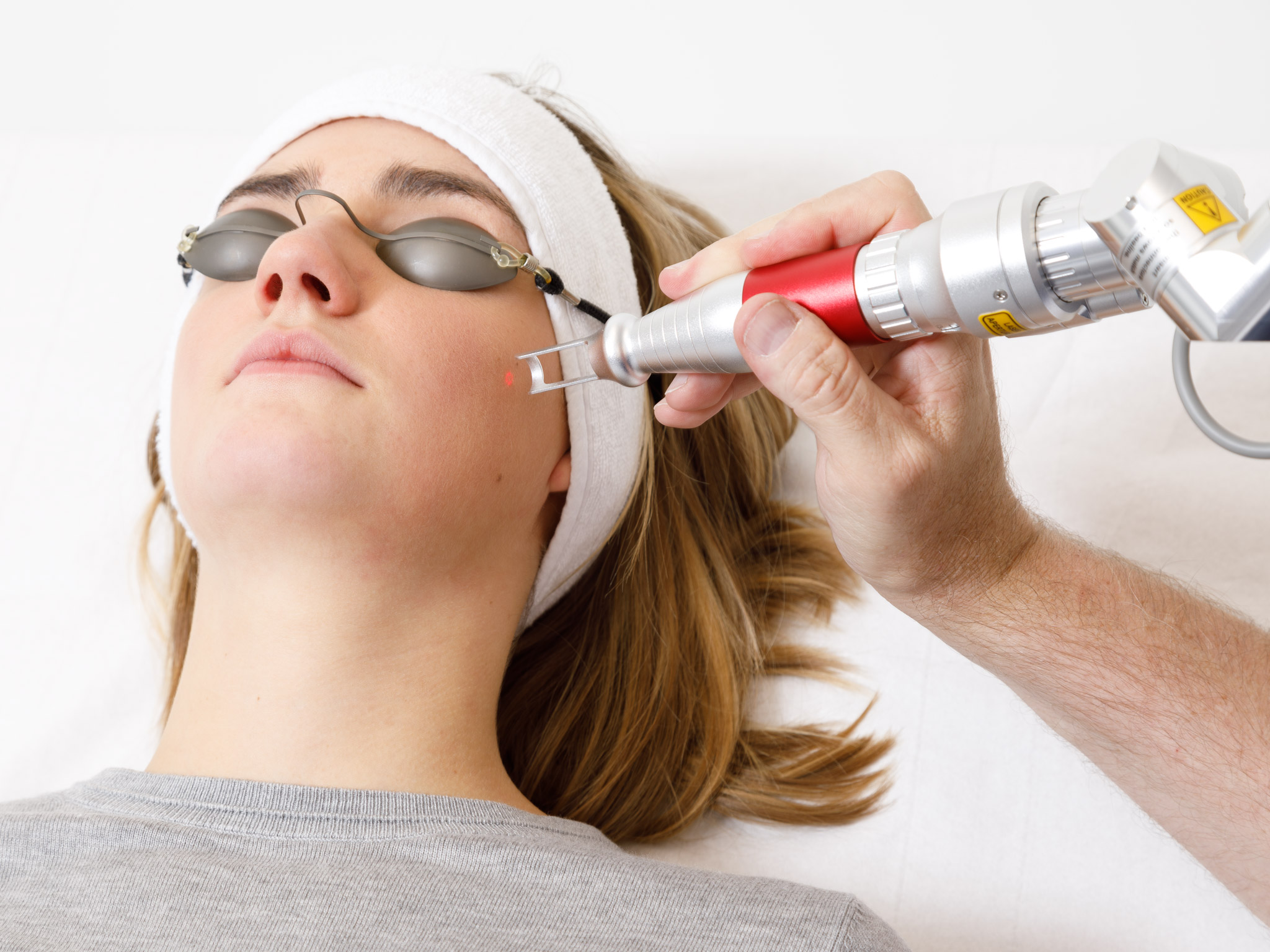The picosecond laser is used for professional or amateur tattoo removal and permanent make-up removal. Thanks to the short pulse time, it will be more efficient than the previously used Q-switched laser. The number of sessions will vary depending on the size of the tattoo and the colours used. This treatment takes place under local anaesthetic. On average, five to ten sessions at two or three-month intervals are necessary. This treatment is suitable for all phototypes from 1 to 6 bearing in mind that darker phototypes will need more sessions.
The picosecond laser can also treat brown spots or lentigines, pregnancy mask or melasma as well as dermal pigmentation lesions such as Naevus of Ota. Treatment of lentigines can either be targeted or by means of a peel to unify the complexion and work on facial skin radiance. The number of sessions varies between one and three for brown spots, eight to treat melasma. Note that the treatment of choice for melasma are sunscreens and topical depigmenting creams. The intervention takes place without anaesthetic. The treatment can cause redness that last for two to three hours or two to three days at most. When treating melasma, care will be taken to avoid causing redness.
The treated spots become darker before fading or disappearing within ten days. Skin should not be tanned. The doctor will recommend a suitable sunscreen with a high protection factor to be applied daily. This treatment is suitable for all phototypes from 1 to 6 bearing in mind that darker phototypes will need more sessions. Only benign spots may be treated with the picolaser. During treatment and in agreement with your doctor, anticoagulants must be discontinued.
This treatment can be combined with another consultation for hyaluronic acid or botulinum toxin injections, or other treatments such as fractional CO2 laser, IPL, HIFU, radiofrequency, microneedling with radiofrequency, or a surgical facelift.
Prior consultation with a dermatologist or plastic surgeon is compulsory. Together, you and your doctor will assess which treatment is best suited to your needs and what the possible side effects might be. Based on this discussion, the doctor will also provide a quote.
